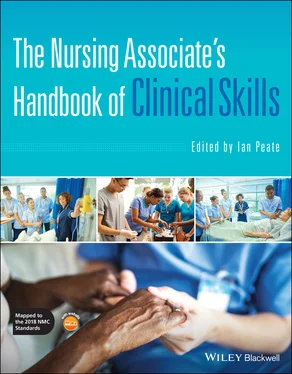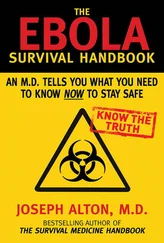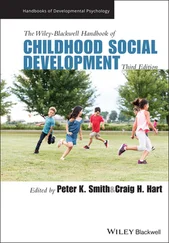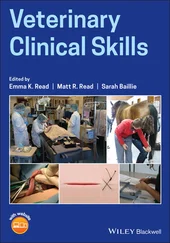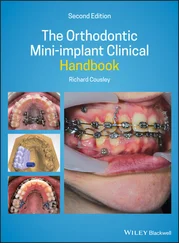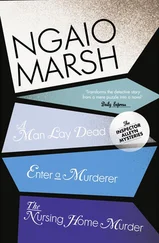The Nursing Associate's Handbook of Clinical Skills
Здесь есть возможность читать онлайн «The Nursing Associate's Handbook of Clinical Skills» — ознакомительный отрывок электронной книги совершенно бесплатно, а после прочтения отрывка купить полную версию. В некоторых случаях можно слушать аудио, скачать через торрент в формате fb2 и присутствует краткое содержание. Жанр: unrecognised, на английском языке. Описание произведения, (предисловие) а так же отзывы посетителей доступны на портале библиотеки ЛибКат.
- Название:The Nursing Associate's Handbook of Clinical Skills
- Автор:
- Жанр:
- Год:неизвестен
- ISBN:нет данных
- Рейтинг книги:4 / 5. Голосов: 1
-
Избранное:Добавить в избранное
- Отзывы:
-
Ваша оценка:
- 80
- 1
- 2
- 3
- 4
- 5
The Nursing Associate's Handbook of Clinical Skills: краткое содержание, описание и аннотация
Предлагаем к чтению аннотацию, описание, краткое содержание или предисловие (зависит от того, что написал сам автор книги «The Nursing Associate's Handbook of Clinical Skills»). Если вы не нашли необходимую информацию о книге — напишите в комментариях, мы постараемся отыскать её.
The Nursing Associate’s Handbook of Clinical Skills
The Nursing Associate’s Handbook of Clinical Skills
The Nursing Associate's Handbook of Clinical Skills — читать онлайн ознакомительный отрывок
Ниже представлен текст книги, разбитый по страницам. Система сохранения места последней прочитанной страницы, позволяет с удобством читать онлайн бесплатно книгу «The Nursing Associate's Handbook of Clinical Skills», без необходимости каждый раз заново искать на чём Вы остановились. Поставьте закладку, и сможете в любой момент перейти на страницу, на которой закончили чтение.
Интервал:
Закладка:
4 Bonebright, D. (2010) 40 Years of storming: a historical review of Tuckman’s model of small group development, Human Resource Development International, 13(1): 111–120.
5 Ellis, P. and Bach, S. (2015) Leadership, management & team working in nursing (2nd edn), London: Sage.
6 Francis, R. (2013) Report of the mid Staffordshire NHS foundation trust public inquiry, London: The Stationery office.
7 Howatson‐Jones. (2004) The Servant leader, Nursing Management, 11(3): 20–24.
8 Jung, C. (1921) Psychological types, The collected works of CG Jung, Vol 6 Bollingen Series XX.
9 Lynas, K. (2013) NHS leadership academy. [online] Available: www.leadershipacademy.nhs.uk
10 Marquis, B. and Huston, C. (2012) Leadership roles and management functions in nursing (7th edn), Philadelphia: Lippincott Williams & Wilkins.
11 NHS Leadership Academy. (2013) The healthcare leadership model, London: NHS.
12 Nursing & Midwifery Council. (2018a) Standards of proficiency for nursing associates, London: Nursing & Midwifery Council.
13 Nursing & Midwifery Council. (2018b). The code: professional standards of practice and behaviour for nurses, midwives and nursing associates, London: Nursing & Midwifery Council.
14 Salas, E., Reyes, D. and McDaniel, S. (2018) The science of teamwork: progress, reflections, and the road ahead, American Psychologist, 73(4): 593–600.
15 Tuckman, B. (1965) Developmental sequence in small groups, Psychological Bulletin, 63(6): 384–399.
16 Tuckman, B. and Jenson, M. (1977) Stages of small group development revisited, Group and Organisation Studies, 2(4): 419–427.
www.belbin.com
www.myerbriggs.org
5 Listening Actively
Jacqueline Chang
Kingston University and St George’s University of London, UK
Chapter Aim
This chapter aims to assist the reader in developing an understanding of the art of listening actively.
Learning Outcomes
By the end of this chapter, the reader will be able to:
Consider the relevance of a therapeutic relationship in healthcare and social care
Explore the importance of active listening in healthcare and social care delivery and the barriers to active listening
Introduce methods of active listening
Test Yourself Multiple Choice Questions
1 Which part of the standards of proficiency for nursing associates (Nursing & Midwifery Council 2018a) highlights the importance of clear communication?Platform 1Platform 5Annexe A
2 Which are the best types of questions to use when communicating with a patient?Open questionsClosed questionsLeading questions
3 When do healthcare professionals need to communicate effectively with patients?When doing an assessmentWhen planning careAll the time
4 The Code (Nursing & Midwifery Council 2018b) instructs nurses and nursing associates to:Actively listen to peopleUse a range of verbal and non‐verbal communication methodsUse written communication as well as verbal communication to ensure understanding
5 In the Code (Nursing & Midwifery Council 2018b), which section is devoted to communication?Section 7Section 4Section 9
Introduction
Communication skill is something that is taught in all nursing associate training programmes. The role of the nursing associate is to provide face‐to‐face care to the patient (and, where appropriate, to the family), and effective communication is a key part of that. This chapter will provide you with an understanding of the importance of listening actively and how that helps to develop a therapeutic relationship. Some of the techniques of active listening will be explained, and there will also be a discussion of some of the barriers faced in healthcare to provide a therapeutic communication interaction.
Take Note
 Consider a time when you are with a patient. How focused are you on what they are saying? Are you able to be in that moment with them, or are there points when your mind is distracted by other things?
Consider a time when you are with a patient. How focused are you on what they are saying? Are you able to be in that moment with them, or are there points when your mind is distracted by other things?
Communication is an essential element of healthcare. Without communication between the healthcare professional and the patient, care cannot be negotiated, and therefore, it cannot be delivered. The Nursing & Midwifery Council (NMC) documents the Standards of Proficiency (2018a) and The Code (2018b); both have communication as a requirement for registered professionals. The Standards (Nursing & Midwifery Council 2018b) go into detail about how best to communicate. If a healthcare professional were to meet these communication standards all of the time, their communication skills would be excellent. The relevant elements of the professional documents can be found below.
Blue Flag
 When working closely with patients, they will often tell you important things, and they may tell you these things because they have got to know you, they like you, they trust you and they can relate to you.
When working closely with patients, they will often tell you important things, and they may tell you these things because they have got to know you, they like you, they trust you and they can relate to you.
Hearing what patients are saying and truly listening and attending to what it is that they are saying is a key skill.
Despite these clear guidelines and requirements, communication is still an issue in healthcare, and there are regular complaints regarding how healthcare staff fail to communicate effectively. The data collected by The National Statistics for National Health Service (NHS) Digital in 2017–2018 found that 15.2% of complaints made about hospital and community health services were related to the communication skills of the healthcare team. This is clearly an issue that needs to be addressed, and effective communication skills cannot be assumed; they need to be learned. The Code (2018b) mentions communication throughout highlighting communication skills under the theme of Practise Effectively and states that the nursing associate must communicate clearly, and in order to achieve this, the nursing associate must:
Use terms that people in your care, colleagues and the public can understand
Take reasonable steps to meet people’s language and communication needs, providing, wherever possible, assistance to those who need help to communicate their own or other people’s needs
Use a range of verbal and non‐verbal communication methods and consider cultural sensitivities to better understand and respond to people’s personal and health needs
Check people’s understanding from time to time to keep misunderstanding or mistakes to a minimum
Be able to communicate clearly and effectively in English.
Green Flag
 The NMC Standards of Proficiency for Nursing Associates (2018b) states that nursing associates must be able to safely demonstrate the following:
The NMC Standards of Proficiency for Nursing Associates (2018b) states that nursing associates must be able to safely demonstrate the following:
1 Underpinning communication skills for providing and monitoring care:1.1 actively listen, recognise and respond to verbal and non‐verbal cues1.2 use prompts and positive verbal and non‐verbal reinforcement1.3 use appropriate non‐verbal communication including touch, eye contact and personal space1.4 make appropriate use of open and closed questioning1.5 speak clearly and accurately1.6 use caring conversation techniques1.7 check understanding and use clarification techniques1.8 be aware of the possibility of own unconscious bias in communication encounters1.9 write accurate, clear, legible records and documentation1.10 clearly record digital information and data1.11 provide clear verbal, digital or written information and instructions when sharing information, delegating or handing over responsibility for care1.12 recognise the need for translator services and material1.13 use age appropriate communication techniques
Читать дальшеИнтервал:
Закладка:
Похожие книги на «The Nursing Associate's Handbook of Clinical Skills»
Представляем Вашему вниманию похожие книги на «The Nursing Associate's Handbook of Clinical Skills» списком для выбора. Мы отобрали схожую по названию и смыслу литературу в надежде предоставить читателям больше вариантов отыскать новые, интересные, ещё непрочитанные произведения.
Обсуждение, отзывы о книге «The Nursing Associate's Handbook of Clinical Skills» и просто собственные мнения читателей. Оставьте ваши комментарии, напишите, что Вы думаете о произведении, его смысле или главных героях. Укажите что конкретно понравилось, а что нет, и почему Вы так считаете.
